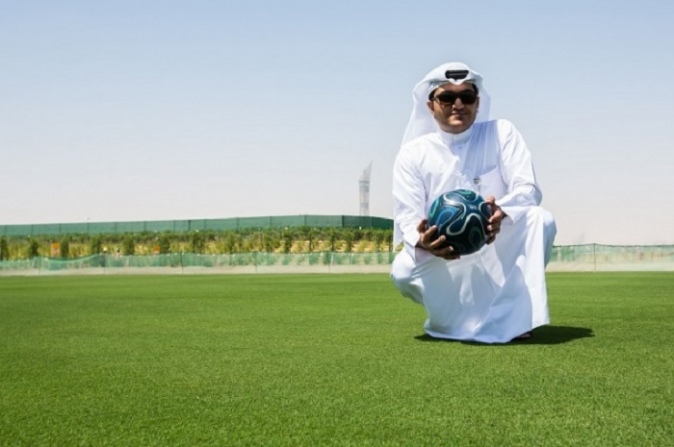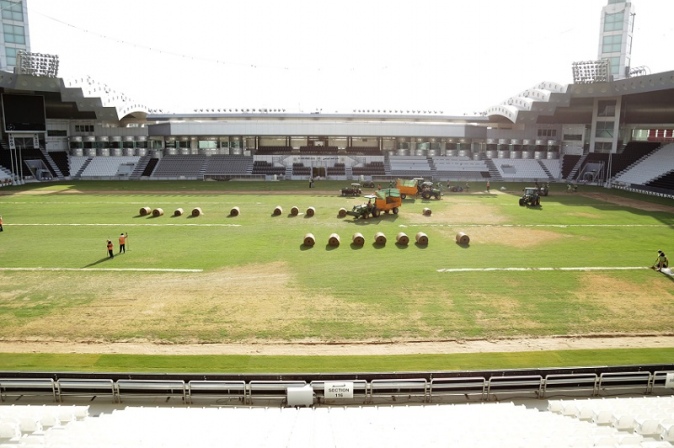By Anthony Harwood
January 26 – Another World Cup, another flurry of complaints about the poor condition of some pitches that teams will have to play on.
At Brazil 2014, England sent a member of their backroom staff to inspect the pitch in Manaus ahead of the opening clash with Italy after the head groundsman admitted it was ‘in bad shape’. Parts of the surface were dry and rutted.
More recently there have been concerns about this year’s tournament in Russia where a retractable pitch in St. Petersburg has been relaid three times amid complaints from FIFA that it was shaking.
Once Russia is over, however, players can look forward to a different experience next time around. That’s because at Qatar 2022 they will be playing on pitches that have been carefully cultivated in the desert to produce surfaces “like putting greens on a golf course”.
Painstaking research into the right type of grass, the right underground temperature, the right humidity and the right fertiliser are creating what organisers hope will be the best World Cup playing surface ever.
“We performed 14 different types of tests, including how fast the ball rolls across the surface, the height at which it bounces, and other elements where we asked players for their opinion and feedback on the surface,” said Yasser Al Mulla (pictured), senior manager of landscape and sports turf management at the Supreme Committee.
“Tests were carried out at our research and development centre on 24 different types of grass which came to the conclusion that this is the ideal turf for the weather conditions we have here in Qatar.”
Turf being relaid at the Al Sadd SC Stadium with new tested grass.
Mulla, who visited France for the Euro 2016 tournament as part of his research, would not divulge the magic type of grass he had developed, only saying that it “was not too spongy and not too hard.”
He added: “Normally, during a game, some bits of grass could be uprooted. So for a tournament like a World Cup pitches have to withstand a lot of matches over a short space of time. Ours will do that.”
If there is a problem with a pitch, for whatever reason, that should not be a problem. In rehearsals, Mulla and his team have been laying down whole new pitches in just 13.4 hours.
The turf nursery was created on an 880,000 sq. metre site in the desert north of Doha, situated next to the region’s biggest manmade forest which aims to grow 16,000 trees of 60 different species as well as thousands of shrubs all for World Cup scenery.
Each year it will produce 1.2 million sq.metres of grass, enough to cover 168 football pitches, for use in recreational areas around stadiums as well as provide the pitches inside them.
In a bid to be as sustainable as possible, the site is being irrigated from the Doha North Sewage Treatment Works that will keep two 18,000 sq.metre lagoons topped up.
Qatar is spending £120 billion hosting the tournament, with £2.4bn going on each of the eight new stadiums, as well as a new airport and train system and accommodation.
Fans can expect to stay in Bedouin-style desert camps and as many as 12,000 could also stay on cruise ships during football’s first World Cup in the Middle East.
The size of the tiny Gulf state will also mean that fans can watch more than one match a day, compared to other host countries where travel times have ruled that out.
Despite the tournament being moved to winter, air conditioning systems will still be needed inside the stadiums to bring temperatures down from 90degF to 73 deg F to keep fans – and players – cool.
So what team will a World Cup in Qatar favour the most?
“The pitches will be as smooth as putting greens on a golf,” said Al Mulla. “That will suit the best passers of the ball – my favourite team, Brazil.”
Yasser Al Mulla at the turf nursery north of Doha.
Anthony Harwood is a former foreign editor of the Daily Mail. Contact him at moc.l1745542073labto1745542073ofdlr1745542073owedi1745542073sni@o1745542073fni1745542073


